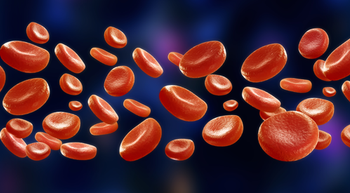
Extended Anastrozole Therapy Improves DFS in Postmenopausal Patients With HR+ Breast Cancer
Extending anastrozole treatment to 10 years in postmenopausal women with hormone receptor–positive breast cancer who have no evidence of disease after 5 years of standard-of-care treatments.
Extending anastrozole treatment to 10 years in postmenopausal women with hormone receptor–positive breast cancer who have no evidence of disease after 5 years of standard-of-care treatment improved disease-free survival (DFS) rates and was well tolerated, according to data published in the Journal of Clinical Oncology.
In the phase 3 AERAS study (UMIN000000818), patients were randomly assigned to anastrozole treatment for 5 years, or no treatment following completion of 5 years treatment with anastrozole alone, or 2 to 3 years of tamoxifen followed by 2 to 3 years of anastrozole. Patients in the continue-treatment arm (n = 787) achieved a 5-year DFS rate of 91% (95% CI, 89%-93%) compared with 86% (95% CI, 83%-88%) for those who stopped treatment after completing standard of care (n = 806; HR, 0.61; 95% CI, 0.46-0.82; P < .0010). The treatment was well tolerated, with grade 3 or higher adverse events (AEs) occurring in less than 1% of patients in both arms of the trial. Bone-related AEs occurred more frequently in the continue group.
“Notably, extended anastrozole treatment reduced the incidence of local recurrence…and second primary cancers,” the study authors wrote. There was no significant difference in overall survival after 5 years of additional therapy with an aromatase inhibitor (HR, 1.13; 95% CI, 0.61-2.10; P = .7042).
At data cutoff, 90.5% of patients who continued therapy were alive and event-free compared with 85.1% of patients in the control arm. First events in the experimental and control arms were as follows: local breast recurrence (0.5% vs 1.2%), local chest wall recurrence (1.7% vs 2.1%), regional node recurrence (1.7% vs 2.1%), distant recurrence (3.8% vs 5.7%), contralateral breast cancer (0.9% vs 1.2%), second nonbreast primary cancer (2.5% vs 5.1%), and death (0.4% each).
Second primary cancer events occurred in 3.4% of patients in the continue-therapy group vs 6.5% of patients in the stop group (P = .0074). Sites including the contralateral breast (0.9% vs 1.4%), colorectum (0.5%) vs 1.0%, lungs (0.5%) vs 0.9%, endometrium (0.3% vs 0.6%), urinary tract (0.0% vs 0.7%), pancreas (0.4%) vs 0.2%, and others (0.9% vs 1.7%).
AERAS investigators examined DFS as the primary end point, which included including breast cancer recurrence, second primary cancers, and death from any cause. With enrollment across 117 centers in Japan, the prospective, randomized, open-label trial provided the first positive clinical trial–based evidence for the effect of aromatase inhibitor extension.
The study authors wrote, “[Forty-one] of 787 patients in the continue group and 61 of 806 in the stop group developed distant recurrence [HR, 0.68; 95% CI, 0.46-1.01; P = .0553], showing a tendency toward reduced distant metastasis in the continue group; however, the difference was not significant in terms of distant DFS.”
The most common AEs of any grade in the continued treatment and control groups were osteoporosis (47% vs 44%, respectively), arthralgia (37% vs 29%), stiff joints (21% vs 12%), hot flashes (14% vs 12%), bone fractures (10% vs 9%), and headaches (10% vs 6%).
In the continue group, excluding those who had a DFS event during treatment, 15.4% of patients discontinued treatment and 7.2% in the control group left the trial. The main reason for drop off included difficulties visiting the hospital for follow-ups.
Serious AEs did not frequently occur for patients continuing treatment with anastrozole; however, investigators noted that this may have been because during the registration period all patients were taking an aromatase inhibitor and those who had serious AEs were not included in the study. Overall, there were 21 deaths in the continue group and 19 deaths in the stop group.
“Long-term continuation of oral anastrozole may be difficult, even when AEs are mild,” study authors wrote, citing that 68 of the 121 study drop-offs in the extended anastrozole group were because of AEs.
More patients took oral bisphosphonates in the continue group (31%) than in the control group (21%). These supportive care medications were administered if a patient experienced loss of bone mineral density on annual tests defined as T score of –2.5% or lower or less than 70% of the young adult mean. Oral bisphosphonates used in treatment were either alendronate at 35 mg or risedronate at 17.5 mg once a week. Anastrozole was given orally to those in the continuation group, at a daily dose of 1 mg and observation without treatment occurred in the stop group.
Enrollment occurred between November 2007 and November 2012, after an extension period due to slower than expected registration of cases.
Eligible patients had no history of receiving a luteinizing hormone releasing hormone agonist, were under age 80 years at enrollment, had an ECOG score of 0 or 1, a preoperative TNM classification of T1-T3 N0-N2 M0, and more than 10% positivity for either hormone receptor. Patients also has to have an invasive diagnosis and had undergone curative surgery, remaining recurrence free following 5 years of postoperative endocrine therapy.
Baseline characteristics were well balanced with a median age 64 years in both groups (range, 41-80). Median body mass index was approximately 23 in both arms, and most patients had node-negative disease (64%). In terms of prior therapies, approximately 39% of patients received adjuvant chemotherapy and 54.4% received radiotherapy. Investigators also noted that patients who did not receive radiation therapy may have experienced reduced local recurrence because of extended anastrozole treatment, in turn possibly affecting the trial’s improved DFS rates.
Tumor status in the combined population were approximately represented as T1 (53%), T2 (43.5%), and T3 (3.5%) and stages were stage I disease (46.2%), IIA (37.0%), IIB (13.0%), and IIIA (3.7%). Nearly all patients had estrogen receptor–positive disease (98.9%) with 73.5% of patients having progesterone receptor–positive disease.
Patients received lumpectomy with radiotherapy, lumpectomy without radiotherapy and mastectomy at approximate rates of 49.8%, 16.2%, and 34.0%, respectively. On the trial 144 patients received tamoxifen before switching to anastrozole on trial and 259 patients underwent breast-conserving surgery without irradiation. Post enrollment, palpation occurred every 6 months, a mammography was done annually, and height as well as bone density were measured.
Although tamoxifen has also been proven effective with extended administration to combat recurrence, investigators noted that further studies including meta-analyses are needed to determine which patients will benefit from extended therapy. Additionally, a limitation of AERAS was that patients were excluded if they had received ovarian function suppression in their first 5 years of treatment and that most patients were postmenopausal. Investigators noted that these factors may not be reflective of a clinical population.
Reference
Iwase T, Saji S, Iijima K, et al. Postoperative adjuvant anastrozole for 10 or 5 years in patients with hormone receptor–positive breast cancer: AERAS, a randomized multicenter open-label phase III trial. J Clin Oncol.Published online April 20, 2023. doi:10.1200/JCO.22.00577
Newsletter
Knowledge is power. Don’t miss the most recent breakthroughs in cancer care.

















































































